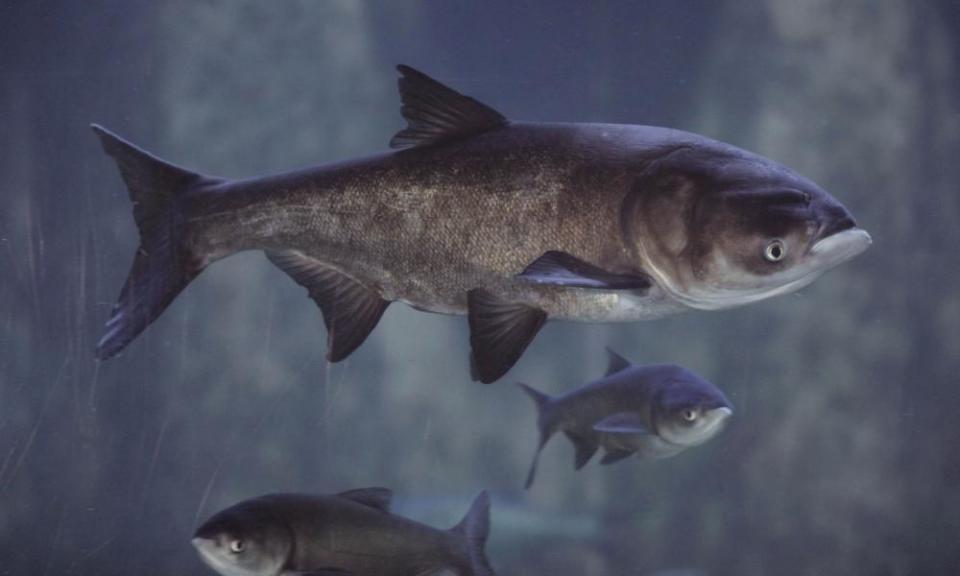Invasive Asian carp found near Great Lakes beyond electrified barrier
The fish was found miles past a barrier designed to keep it from entering the ecosystem and wreaking the sort of damage seen elsewhere in the US

An Asian carp has been found just miles from the Great Lakes, beyond an electrified barrier designed to keep the invasive species from entering the ecosystem and wreaking the sort of damage seen elsewhere in the US.
The fish, weighing 8lbs and measuring 28in, was found by a monitoring team in a waterway nine miles from Lake Michigan, Illinois state officials said on Friday. The carp was sent to Southern Illinois University for further analysis.
The barrier designed to stop Asian carp from heading up waterways into the Great Lakes works by emitting an electrical pulse into the water, which is meant to deter the fish and force them to turn back.
The Illinois department of natural resources and the Asian Carp Regional Coordinating Committee said it was “important to note” that the finding did not confirm there is a reproducing population of Asian carp beyond the barrier or within the Great Lakes.
However, US senator Debbie Stabenow, a Michigan Democrat, said the finding was a “massive wake-up call” and more needed to be done to find any additional carp in the area.
Asian carp is the collective term for a number of species – bighead carp, black carp, grass carp and silver carp – that were introduced to the US in the 1970s, initially in aquatic farms.
The fish found their way into the Mississippi and have established themselves in the river and its tributaries, spreading from southern states as far as Minnesota.
The carp can weigh up to 100lbs and often outcompete other fish, typically consuming up to 20% of their body weight a day in plankton. The animals have been blamed for pushing out native species and lowering water quality, which can kill off organisms such as freshwater mussels.
Silver carp are known to be easily startled and can jump out of the water, sometimes injuring anglers. This ability also means the carp can leap over certain dams. Any invasion of the Great Lakes could disturb the vast freshwater ecosystem and harm the region’s fishing industry.
A recent joint report by environmental regulators in the US and Canada found that the Great Lakes are already coming under pressure from invasive species as well as algal blooms from excessive nutrients, particularly in Lake Erie. The lakes are still a “high quality” source of drinking water, however, and there has been some progress in reducing pollutants, according to the study.
The advance of the Asian carp comes as the Trump administration attempts to justify eliminating a $300m Great Lakes cleanup program in its 2018 budget. The Environmental Protection Agency has said that states can handle the work instead but the cut has been criticized by both Republicans and Democrats in Congress, which will ultimately craft a budget for the agency.

